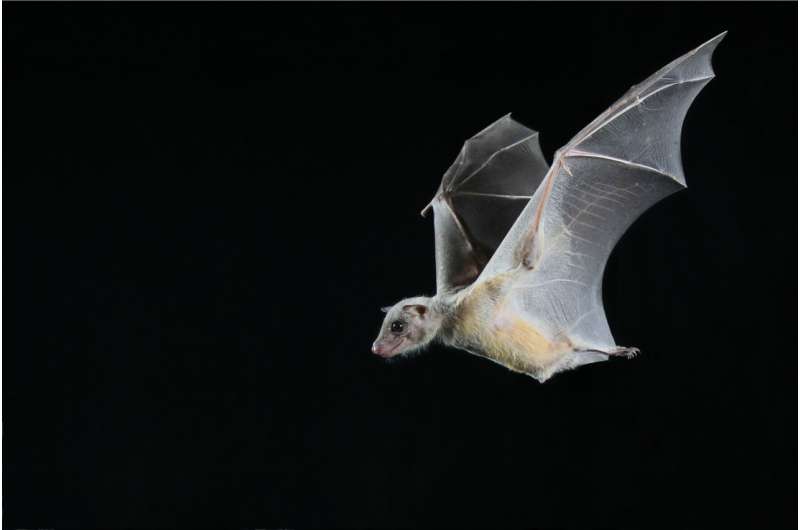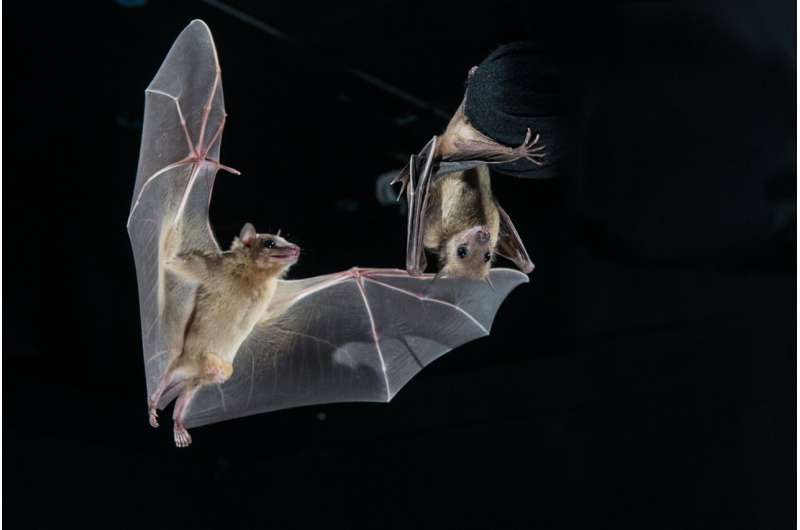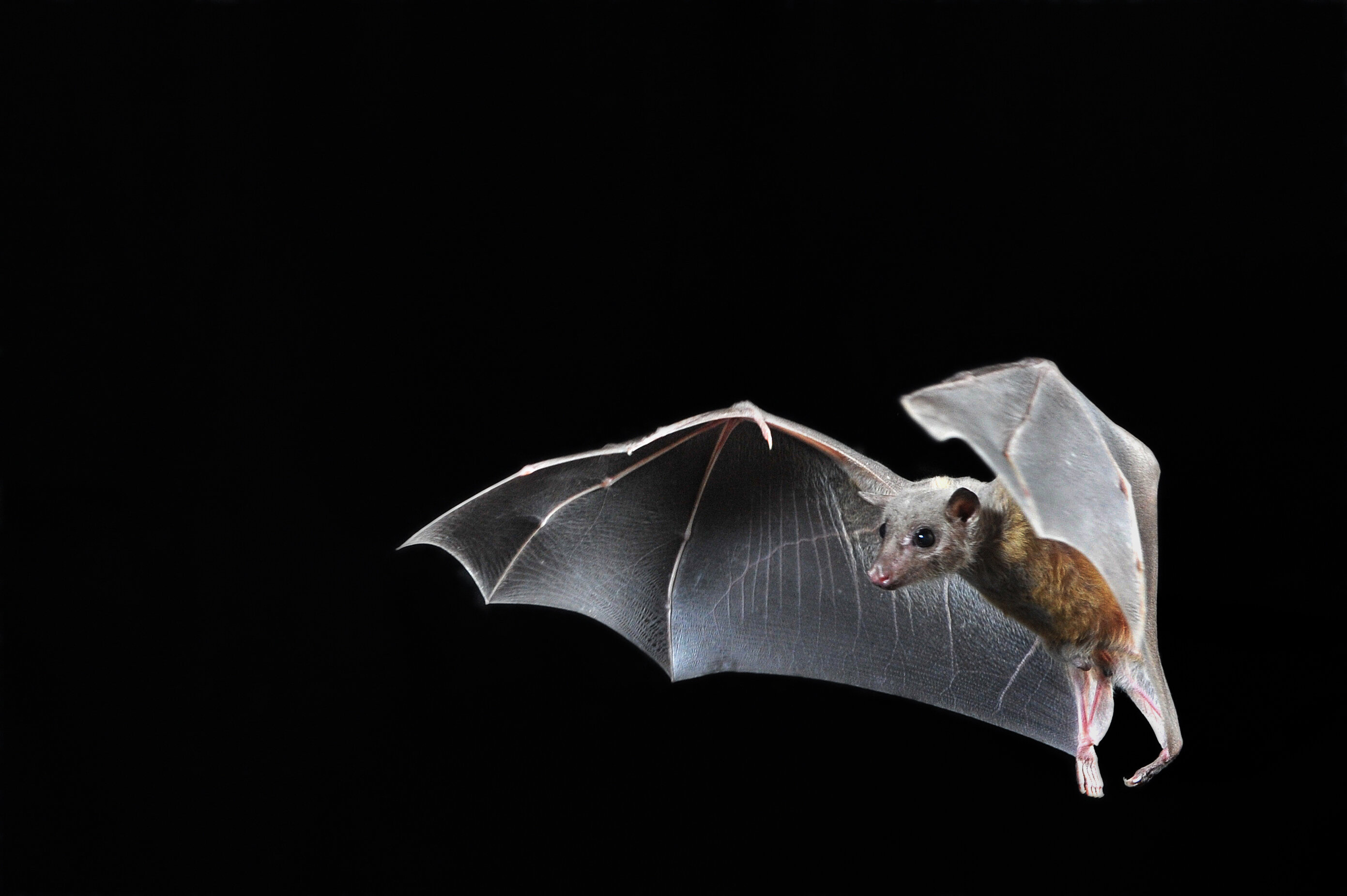Researchers have found that nerve cells in the hippocampus region of the brain encode complex information on numerous characteristics of other individuals in the same social group.
The work, which is being carried out in bats, is the first to show this in a large, mixed-sex group of wild, social animals, and is important because it sheds light on how the brain operates and generates thinking processes and behavior.
Professor Nachum Ulanovsky, Head of the Center for Learning, Memory and Cognition at the Weizmann Institute of Science, Rehovot, Israel, has published numerous studies on how the brain works in bats. In his presentation to the Federation of European Neuroscience Societies (FENS) Forum 2024, he described previous studies on how bats navigate, learn and remember details of the spaces they fly in, and how they interact socially.
In his new study, he digs deeper into how the nerve cells (neurons) in a specific region of the hippocampus, which is responsible for memory and spatial understanding, play a much more complex role. He believes that as the bat hippocampus is very similar to the human hippocampus, similar findings will be discovered in humans in the future.
“Our brain makes us who we are. Our behaviors, emotions, thoughts, memories, our successes and failures are all determined by our brains. It is therefore a fascinating question: How does the brain operate? How does the brain generate behavior and cognition? To address this in a detailed manner, we must record the activity of individual neurons—the basic operating units of the brain—while humans or animals perform various behaviors and cognitive tasks. This is technically easier to do in animals than in humans, which is why recording the activity of individual neurons in behaving animals is crucial for understanding the brain,” he said.

Prof. Ulanovsky and his colleagues created a “bat cave” in their laboratory for colonies of wild Egyptian fruit bats, which are highly social mammals. Each group had between five and ten bats with roughly equal proportions of males and females. The bat cave measured 2.7 x 2.3 x 2.6 meters, and it was equipped with large and small nets between which the bats could fly. The bats knew each other, lived together in the bat cave for several months and were free to fly and interact with each other.
The researchers attached tiny wireless-electrophysiology systems to each bat, which recorded the electrical activity of neurons in the bats’ brains during natural behaviors, such as flight, navigation and social interactions. The bats were also tagged and bar-coded, which enabled the researchers to track the locations and identities of the bats in 3D. The researchers used video cameras to record the bats’ head directions and social interactions when they were hanging in the nets.
Prof. Ulanovsky said, “We discovered a whole host of very strong social signals in the hippocampus. We found that neurons in the hippocampus represented the positions and identities of multiple other bats, creating a social-spatial representation—that is, the neurons encoded who was located where. Moreover, these neurons represented highly important social factors such as the sex of the other bat, its place in the dominance hierarchy (is it a dominant or a subordinate bat?), its social affiliation (is the other bat my friend or not?), and also represented specific forms of social interaction.
“This study suggests that beyond the classical roles of the hippocampus in representing memory and space, the hippocampus may have an additional role in social processing. In particular, it may link these three aspects—social, space and memory—into one unified representation of social-spatial memories.
“Brain research typically focuses on the behaviors of individual animals and humans, and when social behaviors are studied, they are usually investigated in pairs of animals that are socially interacting. But many of our social behaviors inherently involve multiple individuals: Think of your class, your family dinner, the last party you went to, or the latest ball game that you watched. These are all group social behaviors. Nevertheless, to date there have been very few studies of neuronal activity in the brains of animals that are socially interacting in a group. In particular, there have been very few such studies of this in the hippocampus.”

He believes it is important to study the brain in animals that are behaving naturally and in social groups, and not just during the controlled behaviors that are normally used in brain research, as the results can be different.
“I plan to continue studying the brain during ever more naturalistic behaviors, both social behaviors and navigation behaviors. The bat hippocampus and its connections are extremely similar to the human hippocampus in terms of their structure. Therefore, I expect that similar findings will be discovered in humans in the future,” he concluded.
Professor Richard Roche, Deputy Head of the Department of Psychology at Maynooth University, Maynooth, County Kildare, Ireland, is chair of the FENS communication committee and was not involved in the research. He said, “If we can understand the mechanisms that contribute to who we are, where we are, our characters, our motivations, our emotions, how we think and so much else, then we can begin to discover what is different when we have conditions such as depression, anxiety, autism or other conditions related to how our brains behave.
“This fascinating work by Professor Ulanovsky uncovers how individual neurons in the hippocampus are encoding important information about the environment that these bats are living in and about other bats in their social groups. This gives us indicators of what to look for and where to look when we investigate this in humans.”
More information:
“Hippocampal coding beyond the representation of self-location”, by Professor Nachum Ulanovsky, Session S34: The dynamism of the hippocampal neural code, 09.47-10.05, Friday 28 June, Hall B: fens2024.abstractserver.com/pr … ls/presentations/263
Provided by
Federation of European Neuroscience Societies
Citation:
Researchers discover how nerve cells in bat brains respond to their environment and social interactions with other bats (2024, June 27)
retrieved 27 June 2024
from https://phys.org/news/2024-06-nerve-cells-brains-environment-social.html
This document is subject to copyright. Apart from any fair dealing for the purpose of private study or research, no
part may be reproduced without the written permission. The content is provided for information purposes only.

